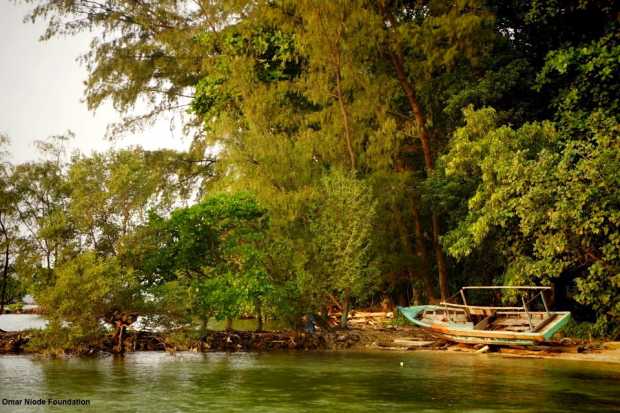Not a member yet? Sign Up!
Info
Please use real email address to activate your registration

This blog post commemorates the International Mangrove Action Day on July 26.
Cooking with Mangroves- 36 Indonesian Mangrove Recipes published in 2006 has not won any Cookbook Awards, but it was once the only reference for those who were interested in cooking with ingredients from the ‘rainforests by the sea.”
Mangroves are a group of trees and shrubs that live at a crossroad where oceans, freshwater, and land meet. Mangrove forests are the breeding grounds for fish, shrimps, prawns, crabs, shellfish and snails.

As one of the most productive and complex ecosystems on the planet, mangroves grow under harsh environmental conditions and survive by having specialized root structures.
Food Sources
Wetlands International Indonesia listed more than 60 species of mangroves describing the characteristics and the potential utilization for most.
Fruits from Avicennia marina, for example, is listed as edible. This species is the ingredient of choice for mangrove snacks in the book Cooking with Mangroves. Preparation before cooking, however, is quite elaborate as you have to peel the fruits, soak in water for 3 days, boil, and soak for another three days. During soaking the water is changed every 8 hours.

The cookbook has 16 recipes using Avicennia spp ranging from cakes to puddings and chips to sweet drinks.
The Mangrove Action Project Indonesia team who published the cookbook had come across several instances of fisher communities eating mangrove fruits and leaves for subsistence purposes. Dr W. Bandaranayake of the Australian Institute for Marine Science explained the uses of mangroves in many countries of the world, among other things as food sources.
Papua New Guineans use the tender leaves of Acrostichum sp., and part of Bruguiera sp., as their staple food while leaves ofare flavoring agents.
The fruits of Nypa fruticans are cooked until tender, called kolang kaling in Indonesia, often used with syrup for cool drinks and desserts.

The fruits of Kandelia candel and Bruguiera gymnorrhiza contain starch and if sliced, soaked in water to rinse out tannins and then ground to a paste are ideal for cakes and pastry. Sago, a staple food in many areas in Indonesia is taken from the mangrove palm tree Metroxylon sagu.
In addition to sugar, Nypa sp provides a diversity of products, including alcohol and vinegar. Cooking oil is also a product of mangroves and the extracts of the heartwood of Avicennia alba and A. officinalis have tonic properties.
Food Exhibition
YAGASU, a non-government organization addressing environmental and community-development issues on the island of Sumatra in Indonesia has been very active active in mangrove restoration and promoting mangrove products as food ingredients. As reported by Analisa Daily, YAGASU organized an exhibition of food made by mangrove flour on this year’s World Environment Day to inform the general public that mangrove fruits have high economic value for communities.
YAGASU processed the fruits of Soneratia sp. into syrup, jam, and sweet snacks. The flour of Avicennia marina is the main ingredient for donuts, brownies, layer cakes, muffins, and breads.
MasJamang

Another organization, KeSEMaT a mangrove study group under the auspices of Universitas Diponegoro in Central Java, has been consistent in its efforts on raising public awareness to preserve mangrove forests. KaSEMat has a business venture offering mangrove chips, crackers, sticks and cakes under the brand name MasJamang.

In 2010, in collaboration with the Indonesian Ministry of Marine Affairs and Fisheries, Mangroves for the Future and the International Union for Conservation of Nature, KeSEMaT published a book Beragam Produk Olahan Berbahan Dasar Mangrove (Various Mangrove Based Processed Products).
Recipes in the book authored by Aris Priyono et.al. are categorized based on 8 mangrove species used as ingredients. Avicennia spp is the basis of 30 recipes in the book, ranging from snacks to desserts. The book authors further noted that the knowledge on the potential and benefits of mangroves as food sources is still limited.
Mangrove Conservation

The International Mangrove Action Day is a reminder to protect the rights of coastal communities to sustainably manage and conserve their coastal wetlands and the numerous life-supporting functions of mangroves.
Mangrove cookbooks may perhaps one day win cookbook awards.
------------------------------
Images: YAGASU, MasJamang, KeSEMaT, TCRP Indonesia, Omar Niode Foundation